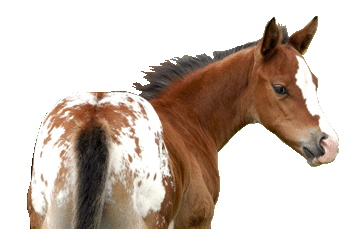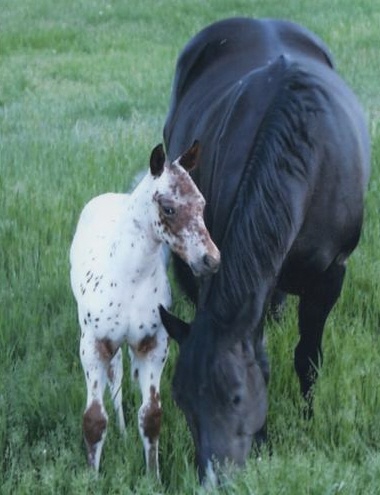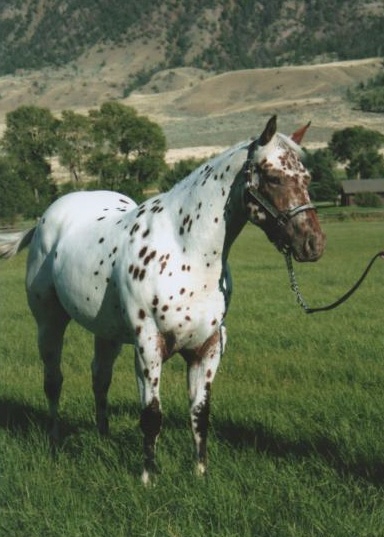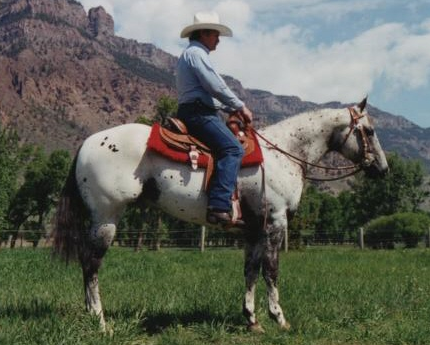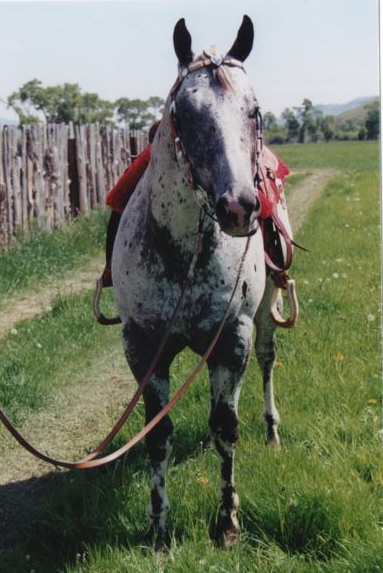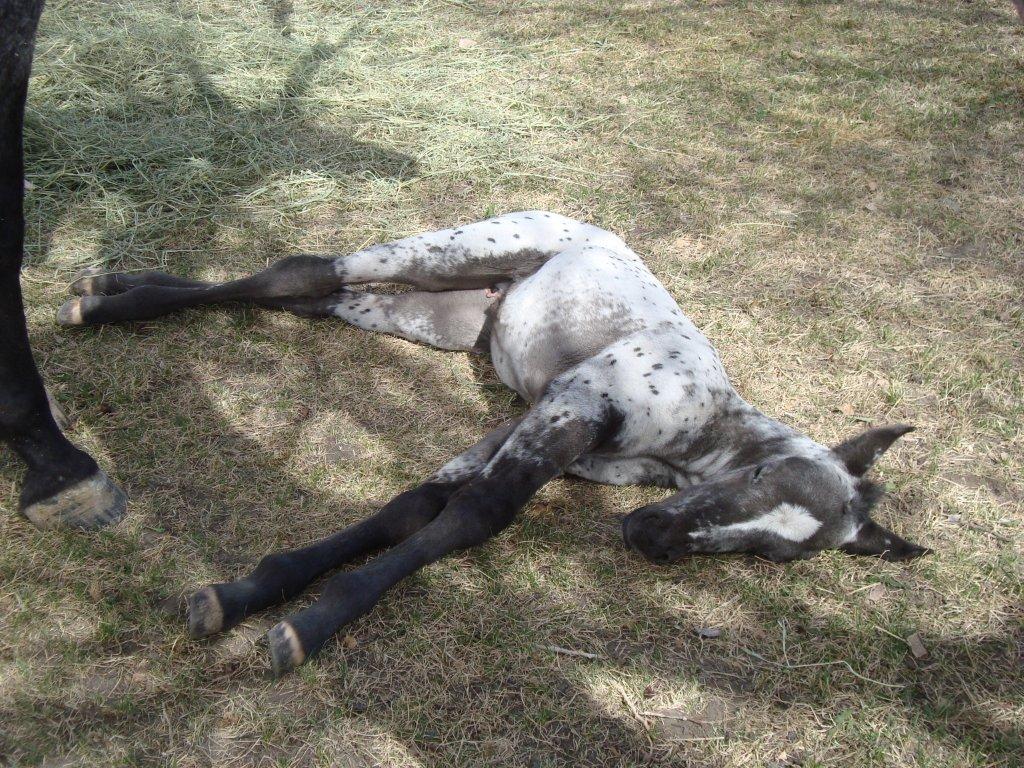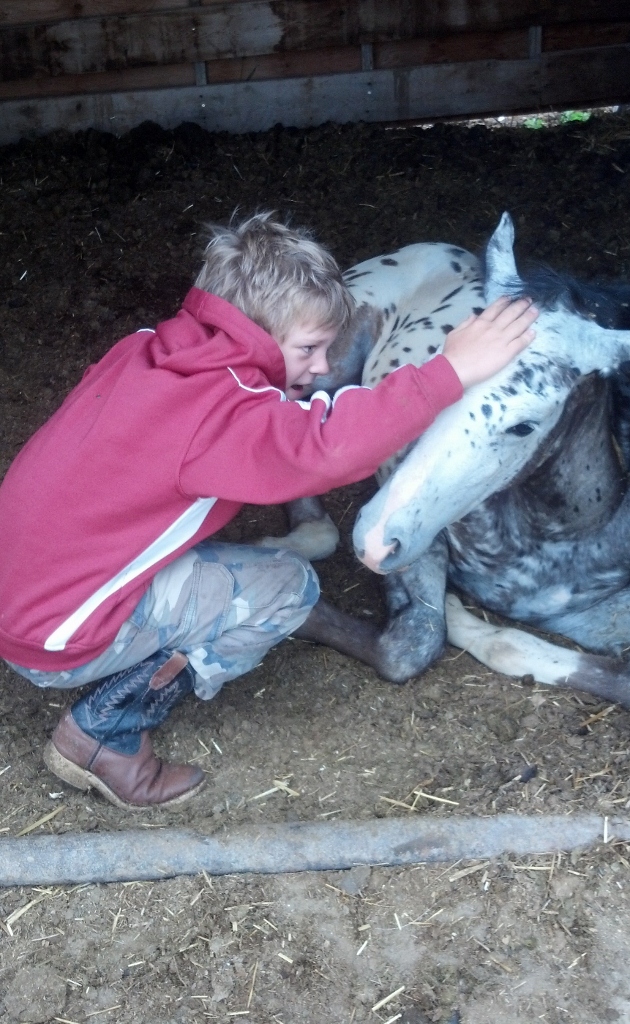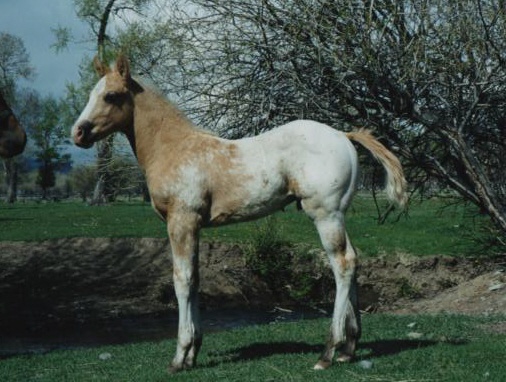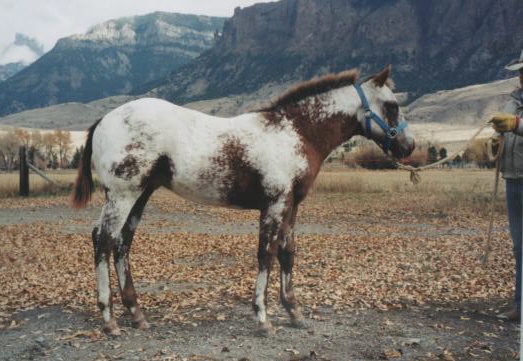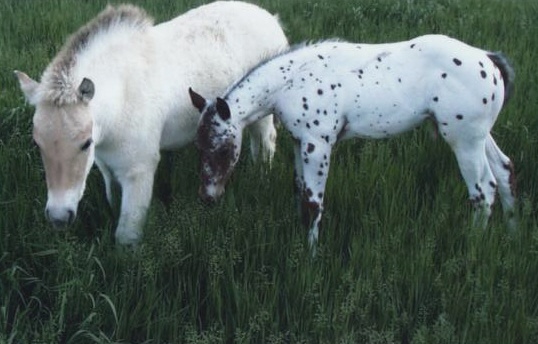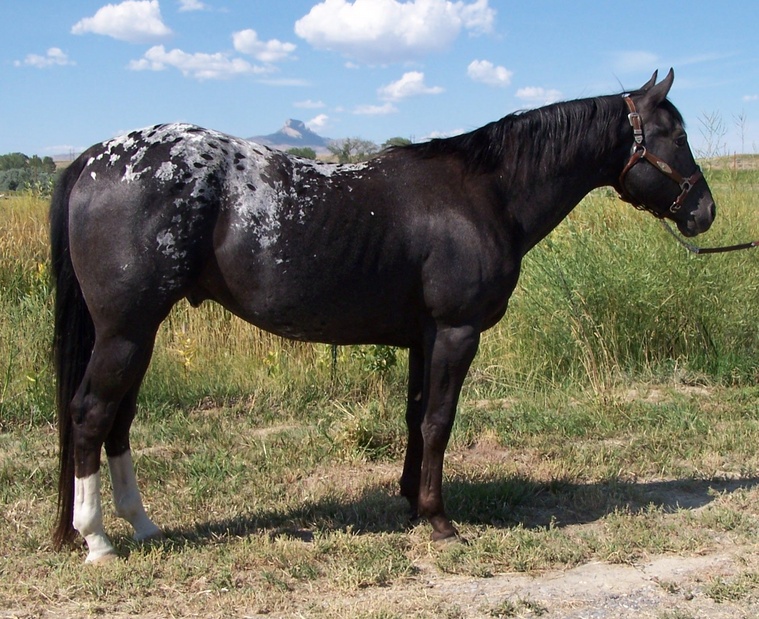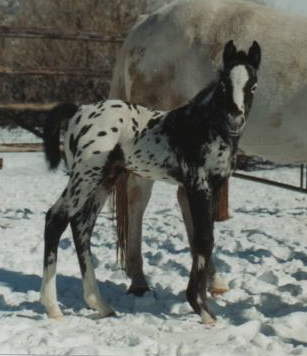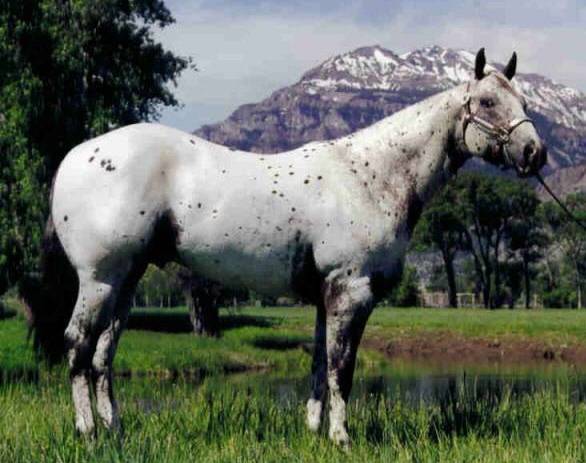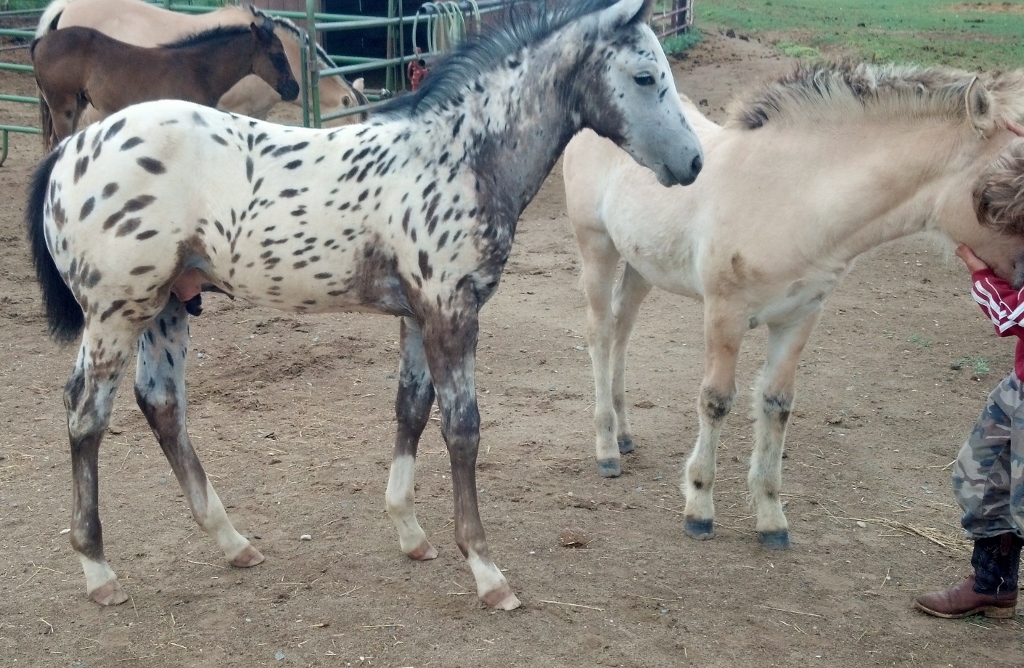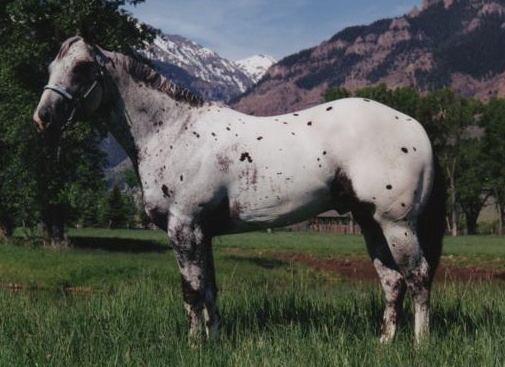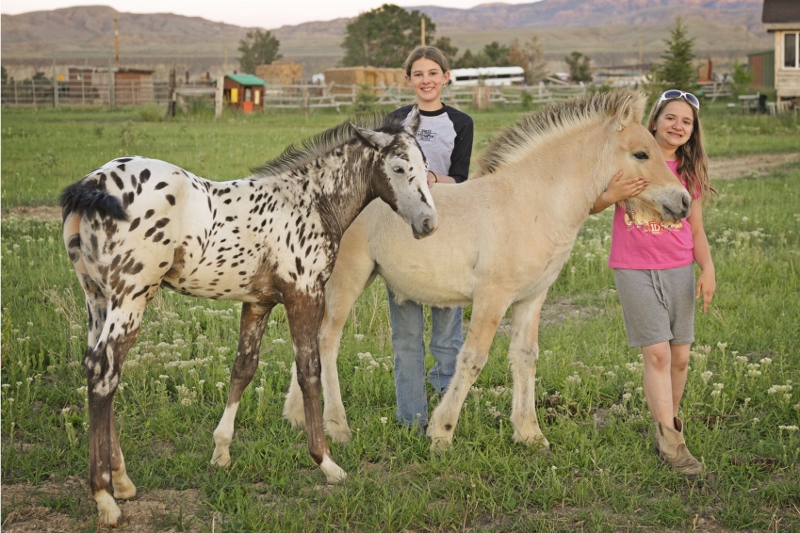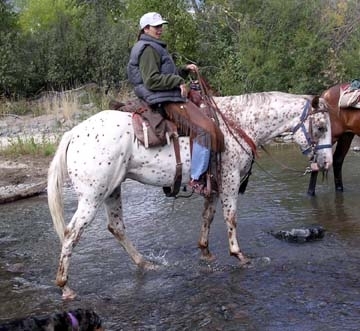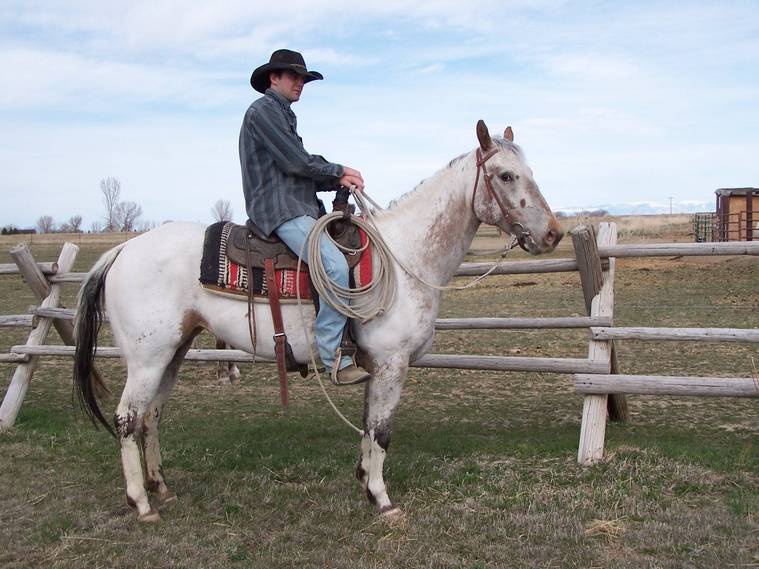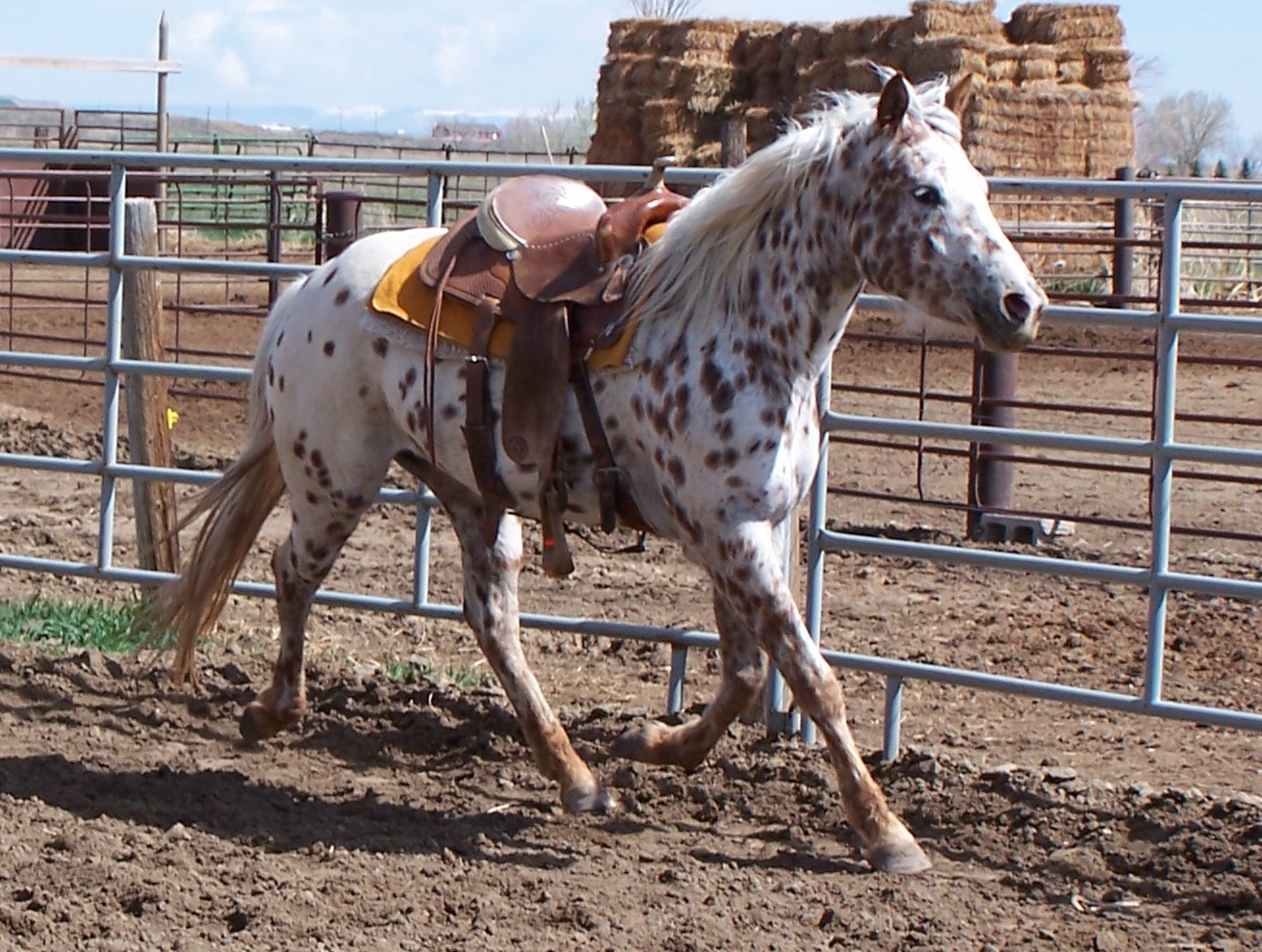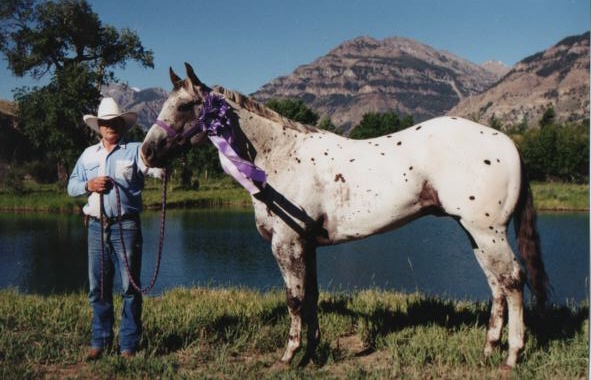
We at the Accent Ranch take great pride in our Appaloosa Horses. The Appaloosa Horses that we raise have the agility, confirmation, strength and stamina to succeed in many disciplines, from calf roping to goat tying, barrel racing, team roping, cow horse, driving, pole bending, halter, ranch versatility and trail riding.
Our Appaloosa stallion, "Lover" (Can't Hurry Love), and our band of brood mares have made it possible to provide great Appaloosa Horses for sale. Many of our Appaloosa Horses for sale are sold as weanlings. On occassion we have two year old Appaloosa Horses and three year old Appaloosa Horses for sale.
You can view some of our past Appaloosa Horses that we raised on the slideshow below. To view more information on our Appaloosa Horse stallion (Lover) please see our Stallions page.
Our Appaloosa stallion, "Lover" (Can't Hurry Love), and our band of brood mares have made it possible to provide great Appaloosa Horses for sale. Many of our Appaloosa Horses for sale are sold as weanlings. On occassion we have two year old Appaloosa Horses and three year old Appaloosa Horses for sale.
You can view some of our past Appaloosa Horses that we raised on the slideshow below. To view more information on our Appaloosa Horse stallion (Lover) please see our Stallions page.
Appaloosa Horses
The Accent Ranch - Quarter Horses - Appaloosa Horses - Norwegian Fjord Horses
1531 Hwy. 14 A - Powell, Wyoming 82435
(307) 764-1811 or (307) 272-7731
1531 Hwy. 14 A - Powell, Wyoming 82435
(307) 764-1811 or (307) 272-7731
Accent Ranch Appaloosa's
Appaloosa
Breed History
Breed History
Our Appaloosa Horse Photos
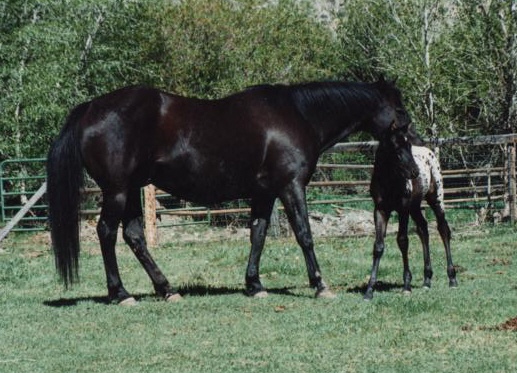

The Appaloosa has a bold and colorful heritage, originating some 20,000 years ago. Its appearance and unique qualities earned it special recognition in the drawings of cave dwellers, worship in ancient Asia, and status as a prized mount of Spanish explorers, Native Americans and western settlers. The name 'Appaloosa' is only a century old and was coined during the 1870's and derived from the Palouse River which flows through northwestern Idaho, flowing from a western spur of the Bitterroot Range just a few miles from the Snake River. White people referred to the spotted horse of the Nez Perce as "Palouse horses, when a newcomer would ask "What kind of horse is this?" The answer would be "A Palouse horse". The A and Palouse were slurred together to form Apalousey and later Appaloosa.
The Nez Perce, almost from the first, practiced some selective breeding. They consisted chiefly of castrating some of the poorer stallions and of trading off poorer stock to the neighbors. Their breeding was effective, for the Nez Perce produced better horses than other tribes did, and some of the tribes rated Nez Perce horses above those stolen from the Spanish ranches. Here is an evaluation by one of the first white men to visit the tribe, Meriwether Lewis, who was a skilled horseman from Virginia, in an extract from his daily journal, dated Saturday, February 15, 1806:
Their horses appear to be of an excellent race; they are lofty, eligantly formed, active and durable; in short many of them look like fine English coarsers and would make a figure in any country. Some of those horses are pided with large spots of white irregularly scattered and intermixed with the black, brown, bey or some other dark color. He also mentions: some are marked much like our best blooded horses in Virginia, which they resemble as well in fleetness and bottom as in form and color.
Much has been written and filmed about the Nez Perce war of the late 1800's and the famed Chief Joseph. The tribes horses helped them elude the U.S. Cavalry for several months. The tribe fled over 1,300 miles of rugged terrain under Chief Joseph's guidance. When they were defeated in Montana, their surviving horses were surrendered, left behind or dispersed to settlers and subjected to random breeding. Nothing was done to preserve the Appaloosa until 1938, when a group of dedicated horsemen formed the Appaloosa Horse Club for the preservation and improvement of the diminishing spotted horse.
Today, the Appaloosa's color, versatility, willing temperament and athletic ability make it a popular choice for a number of activities.
The Nez Perce, almost from the first, practiced some selective breeding. They consisted chiefly of castrating some of the poorer stallions and of trading off poorer stock to the neighbors. Their breeding was effective, for the Nez Perce produced better horses than other tribes did, and some of the tribes rated Nez Perce horses above those stolen from the Spanish ranches. Here is an evaluation by one of the first white men to visit the tribe, Meriwether Lewis, who was a skilled horseman from Virginia, in an extract from his daily journal, dated Saturday, February 15, 1806:
Their horses appear to be of an excellent race; they are lofty, eligantly formed, active and durable; in short many of them look like fine English coarsers and would make a figure in any country. Some of those horses are pided with large spots of white irregularly scattered and intermixed with the black, brown, bey or some other dark color. He also mentions: some are marked much like our best blooded horses in Virginia, which they resemble as well in fleetness and bottom as in form and color.
Much has been written and filmed about the Nez Perce war of the late 1800's and the famed Chief Joseph. The tribes horses helped them elude the U.S. Cavalry for several months. The tribe fled over 1,300 miles of rugged terrain under Chief Joseph's guidance. When they were defeated in Montana, their surviving horses were surrendered, left behind or dispersed to settlers and subjected to random breeding. Nothing was done to preserve the Appaloosa until 1938, when a group of dedicated horsemen formed the Appaloosa Horse Club for the preservation and improvement of the diminishing spotted horse.
Today, the Appaloosa's color, versatility, willing temperament and athletic ability make it a popular choice for a number of activities.
